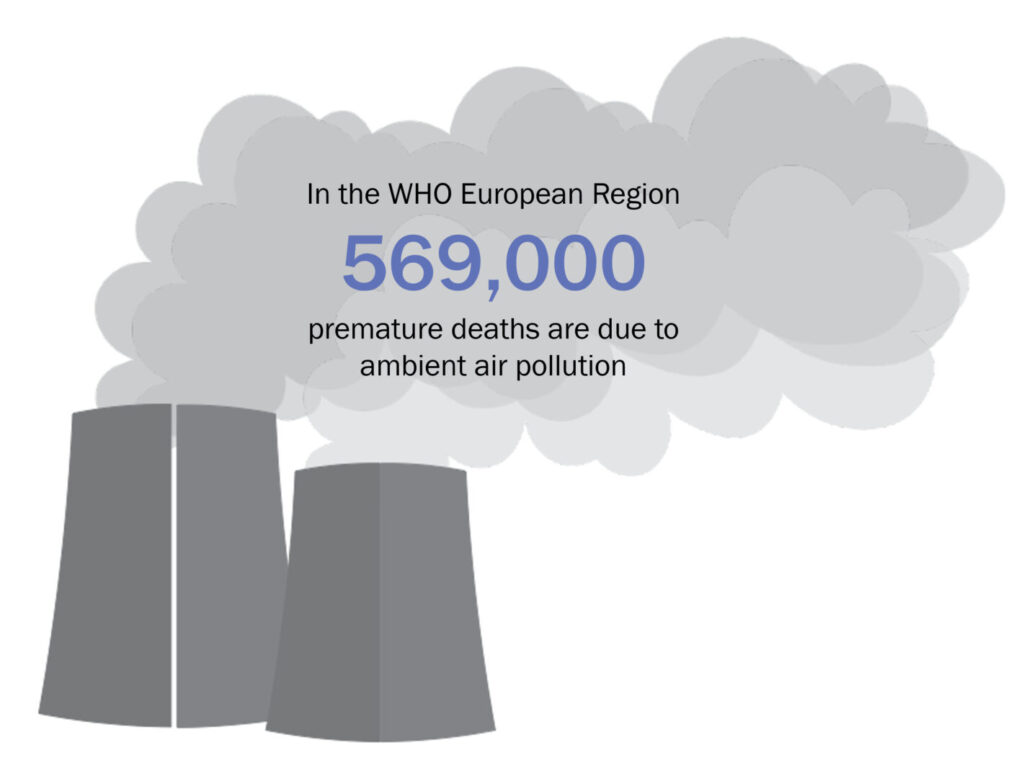Understanding Air Pollution Risks: Communicating Effectively in the WHO European Region
A number of LongITools researchers contributed to a report focused on communicating the risks of air pollution to the general public, published earlier this year.
The World Health Organization report “Risk communication of ambient air pollution in the WHO European Region: Review of air quality indexes and lessons learned” provides an overview of air quality indexes used in 37 Member States of the WHO European Region and includes observations and suggestions to help improve future risk communication.
Air pollution poses significant health risks, causing millions of deaths worldwide. In the WHO European Region, countries employ different strategies to convey air quality dangers to their citizens.

Source: https://www.who.int/europe/news-room/fact-sheets/item/air-quality
The report discusses the widespread availability of air quality data through online platforms and mobile apps. Most countries in the region use their own country-specific air quality index, reflecting the varying pollution levels across Europe. However, it stresses the need for validating air quality indexes using local health data in order to ensure that the indexes accurately represent health risks.
Variation in Health Messaging
The report emphasises that health messaging accompanying air quality indexes varies greatly. The most effective health messages combine detailed information about at-risk populations, a description of the symptoms likely to be experienced, and recommended behaviour modifications to reduce exposure and risk.
The authors highlight the need for tailored health messaging and flexibility in risk communication approaches because of differences in air pollution mixtures, baseline concentrations, cultural norms related to outdoor activities, and risk preferences. They suggest the focus should be on country-specific messaging reflecting local contexts and preferences.
Various countries are cited as examples for providing tailored health advice, from Germany’s health tips for sensitive groups to Georgia’s recommendations based on specific pollutants. In Georgia, for example, moderate ozone (O3) levels may trigger a health recommendation for people with asthma, but the same index level for particulate matter (PM) or nitrogen dioxide NO2 may trigger a recommendation for another population group. In Luxembourg, warnings specify that as air quality worsens, sensitive populations can experience negative effects on health, including irritation of the nose, eyes, or throat; breathlessness; or more frequent or stronger asthma exacerbations. And in Norway, reducing outdoor activity is recommended not only during periods of elevated air pollution but also in areas that are more likely to have higher air pollution.
Global Significance
While the report focuses on the WHO European Region, the principles it discusses are applicable worldwide. The importance of accurate and localised risk communication extends beyond Europe and is crucial for addressing the universal challenge of air pollution.
Implications for the Future
In a world facing increasing environmental challenges, the lessons from this report can guide policymakers, health experts, and communicators in refining their approaches to air quality risk communication. By considering local contexts and validation efforts, countries can better protect the health and well-being of their populations.
Contributions from LongITools
LongITools researchers who provided research support to authors Kevin Cromar (New York University Grossman School of Medicine, USA) and Noussair Lazrak (New York University, USA and Cadi Ayyad University, Morocco) are: Angélica Ateortúa, Marina Camacho, Anna Cascarano, Vien Ngoc Dang, and Karim Lekadir (University of Barcelona, Spain), Zhanna Balkhiyarova (University of Surrey, United Kingdom), Yiyan He and Sylvain Sebert (University of Oulu, Finland), Irene Marques (Erasmus University Medical Center, Netherlands), Santtu Mikkonen (University of Eastern Finland, Finland), Ana Gonçalves Soares (University of Bristol, United Kingdom), Evangelia Tzala (Imperial College London, United Kingdom).
Report
Cromar K, Lazrak N. Risk communication of ambient air pollution in the WHO European Region: review of air quality indexes and lessons learned. Copenhagen: WHO Regional Office for Europe; 2023. Licence: CC BY-NC-SA 3.0 IGO.